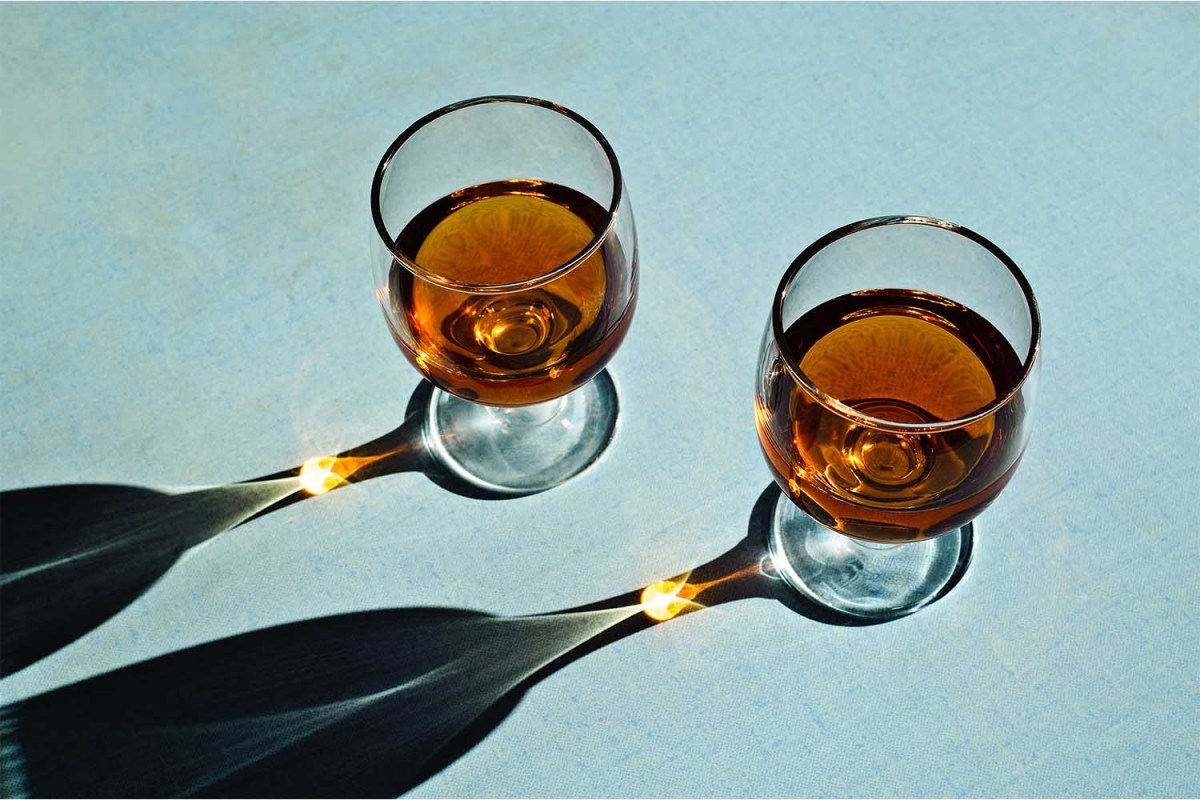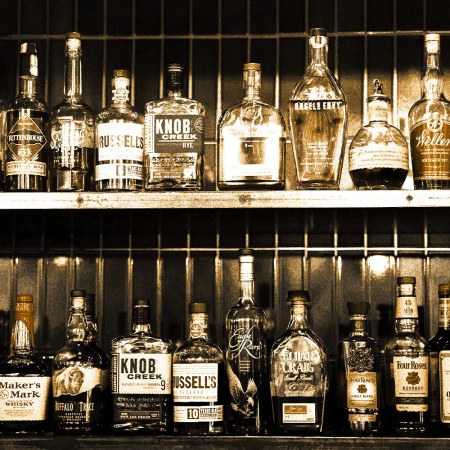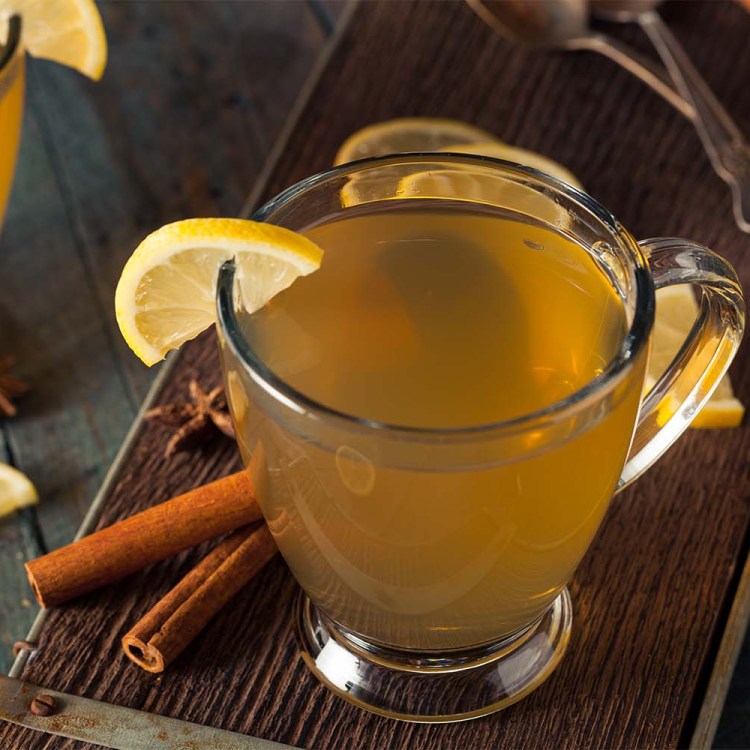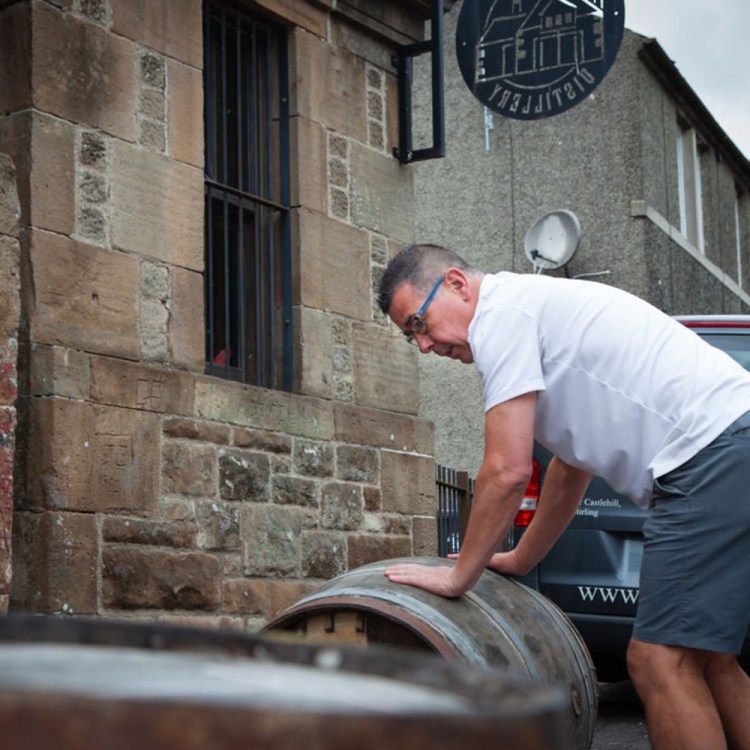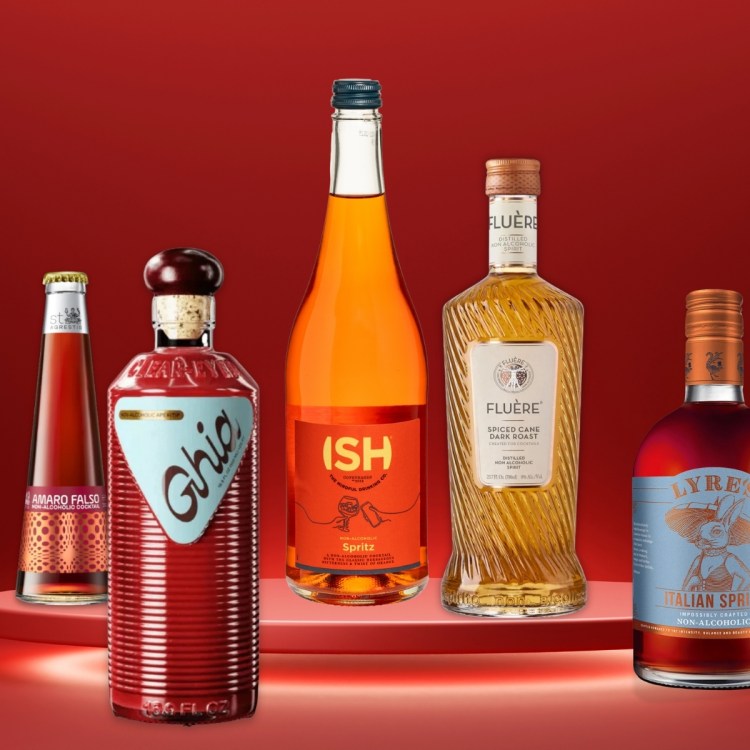The term “brandy” may be familiar, but few, when pressed, could offer a succinct definition. This ubiquitous yet elusive liquor is used to soak cakes, flambé a baked Alaska or found gently cradled in snifters by roaring firesides. Brandy, simply put, is a spirit distilled from fermented fruit juice, very often grape juice. Yet the average wine drinker might not know that wine and brandy are two sides of the same coin. To that effect, what you like in one is what you’ll probably enjoy in the other.
What is now colloquially known as brandy goes by many names, often accompanied by generations of regional production. While there are many other types of fruit wine, the predominantly made and consumed versions in the Western world rely heavily on grapes. Because of demand and availability, a lot of the same rules that apply to wine apply to brandy. So how does your favorite wine translate to your new favorite brandy?
“This is a question we get a lot,” says David Warter, Vice President of Winemaking and Distillation at E&J Gallo Winery, which makes Argonaut and Germain-Robin brandy.
But before we dive into the answer, let’s dive into the basics of brandy itself.
What Exactly Is Brandy?
Brandy is an umbrella term for any fruit wine distilled into a spirit. The type of brandy made was usually dictated by whatever wine was made in that region. It also offers some cultural and historical significance.
“[Brandy] has evolved over centuries as a fundamental companion to the household, not only as a beverage, but has been used to treat colds, sterilize rooms, light fires and entertain but also customarily mark life events, birth and death,” says Bill Gould, the co-founder of Yebiga, a Balkan brandy. You might know Gould from his time with the band Faith No More, but the musician has had a long affinity for the Balkan rakija. “It dates back to at least 1000 AD, some 300 years before the first recorded French brandy,” he adds. “Rakija in the Balkans is as iconic today as soccer is to Brazil.”
There are plenty of regional wine-based spirits, including Cognac, Armagnac, pisco, calvados, grappa and rakija (to name just a few), which are often grouped in a confusing mess. While all of the previously mentioned liquors have been referred to as brandy, some of them may not technically be considered brandy.
Grape wine-based Armagnacs and Cognacs are the most well-known brandies, but not all brandies are Armagnac or Cognac. Grappa is distilled from grape pomace, or mash, and while sometimes called pomace brandy, it’s technically in a separate category. Rakija is made from grape juice or other fruit juices depending on its location of origin. In Serbia, the fruit base is plum, and the resulting spirit is the national beverage called slivovitz. Pisco is a Peruvian distillate made from a mixture of must and juice but is consumed unaged. Calvados is made from fermented dry cider and then aged in oak for two to three years.
Review: OMAGE Puts a New Twist on Brandy
A purposeful nod to Cognac via California, these brandies honor tradition but also aim for a modern taste profileAmerican brandy has had its own journey. ”Brandy in the U.S. reflects where the grapes are grown,” Warter says. “European immigrants wanted great brandy that helped them remember their history. Early Americans searched for the best places to grow grapes. Eventually, they learned they could grow apple brandy on the East Coast, but they needed the Mediterranean climate of California to make the brandy they recognized. Most of the early pioneers in brandy production were Catholic monks who planted the Mission grape around the California Missions.”
Brandy is often aged in oak barrels, resulting in a rich, amber color and rounder mouthfeel. Most brandies are 40% to 50% alcohol by volume and are the result of barrels blended from different harvests and years of aging, which lends itself to a subtly complex spirit. “The brandy-making process helps concentrate the inherent fruit notes of the grapes while adding oak-driven characteristics like vanilla, nutmeg and spice, all coming together to create a product that is familiar and appealing yet distinctive and unique,” Warter says.
As Warter notes, while brandy is a great sipping product, it also has a rich cocktail history. “Cocktails that were created west of the Rockies pre-1920 were made from brandy crafted in the United States,” he says. “The Old Fashioned, the Mint Julep, the French 75 and even the traditional Margarita were all created and enjoyed with brandy.”
How Do Cognac, Armagnac and Brandy Differ?
Brandy can be made from many different types of fruit juices, but the rules around Cognac and Armagnac, although related, are far more restrictive. Similar to French wine regions, making brandy with certain types of grapes in certain regions can be traced back hundreds, if not thousands, of years. Cognac is a French appellation d’origine contrôlée (AOC) and must be made using juice from ugni blanc, colombard or folle blanche grapes.
“Cognac must be produced in the Cognac region of France,” says Eric Forget, the cellar master from Hine. “Limestone-rich soil coupled with cool oceanic climate delivers the finest, most delicate wine — which, when distilled, gives way to a beautifully floral, elegant, rich and smooth Cognac. It’s a brandy style that cannot be replicated anywhere else in the world.”
The unaged spirit is referred to as eau-de-vie or “water of life.” To become Cognac, that spirit rests in Limousin or Troncais oak for at least two years. The art of Cognac is in the blending of barrels from varying age expressions, but the bottles must be labeled for the youngest barrel used.
Armagnac, meanwhile, boasts a slightly older legacy than Cognac, with roots found in Roman times. Armagnac is made in France just south of Cognac, but the type of grapes is not as restricted, although ugni blanc is the most common. Armagnac is distilled only once and therefore retains more of the subtle fruit-forward grape flavors than Cognac before being aged in oak.
Each bottle of Cognac is rated and labeled with terms like VS (Very Special), VSOP (Very Superior Old Pale) or XO (Extra Old). These indicate aging restrictions and the specific grape varietals that were used. VS means the spirit has been aged up to two years while VSOP refers to four years of age. XO has been aged at least 10 years, and the price usually reflects that extra time.
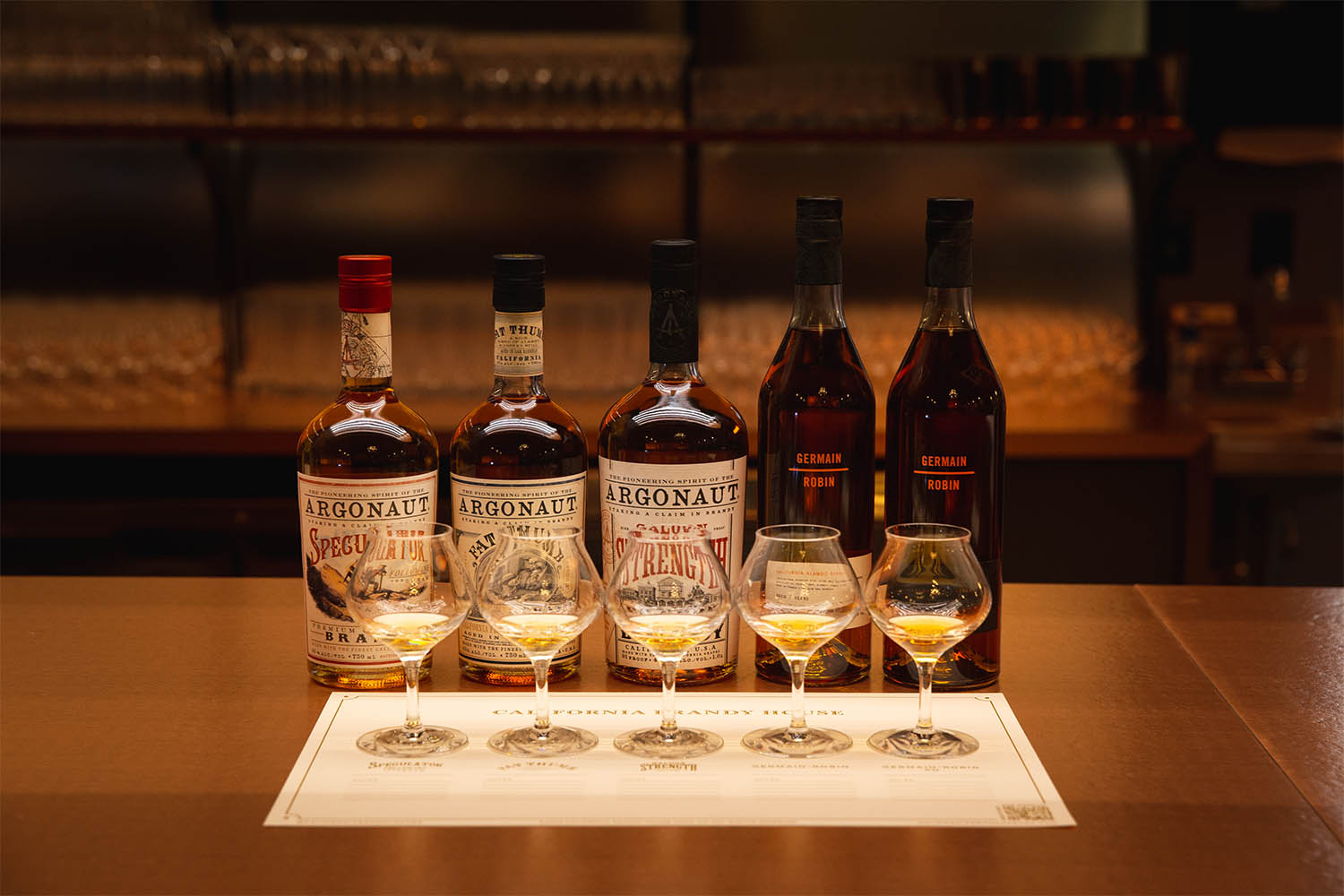
American brandy often carries these designations with slightly different requirements and allows the blender to create unique brandies to exemplify their terroir and age expressions. “Every vintage has brought unique challenges, which highlights different grape varietals in different ways,” Warter says. “Brandy is most often a blend of different varietals from different vintages because as a blender, my role is to enable 1+1=3. Some of our Argonaut blends are older brandy blended with younger brandy to help develop unique nuances. Sometimes, Mother Nature delivers gifts that are unique all by themselves. That is why we also introduce single barrel varietals.”
How to Enjoy Brandy as a Wine Drinker
When it comes down to it, brandy and wine share many similarities but just as many differences. “If one is familiar with the vast varieties of wine styles in the world or enjoys fine brown spirits that balance oak and fruit characteristics, they are ready to enjoy brandy!,” Warter Says. “I encourage everyone to let their palate educate them as they taste through many different brandies with many different accompanying foods.”
For Gallo’s brands, Warter offers this primer. “If you love the plush mouthfeel of pinot noir, our Germain Robin XO Brandy is crafted with 70% pinot noir grapes,” he says. “Our flagship product, Germain-Robin Brandy, is a blend of expressive, aromatic grapes like viognier, gewürztraminer and riesling blended with the traditional Cognac varieties of French colombard and sémillon to craft a distinctly fruit-forward product.”
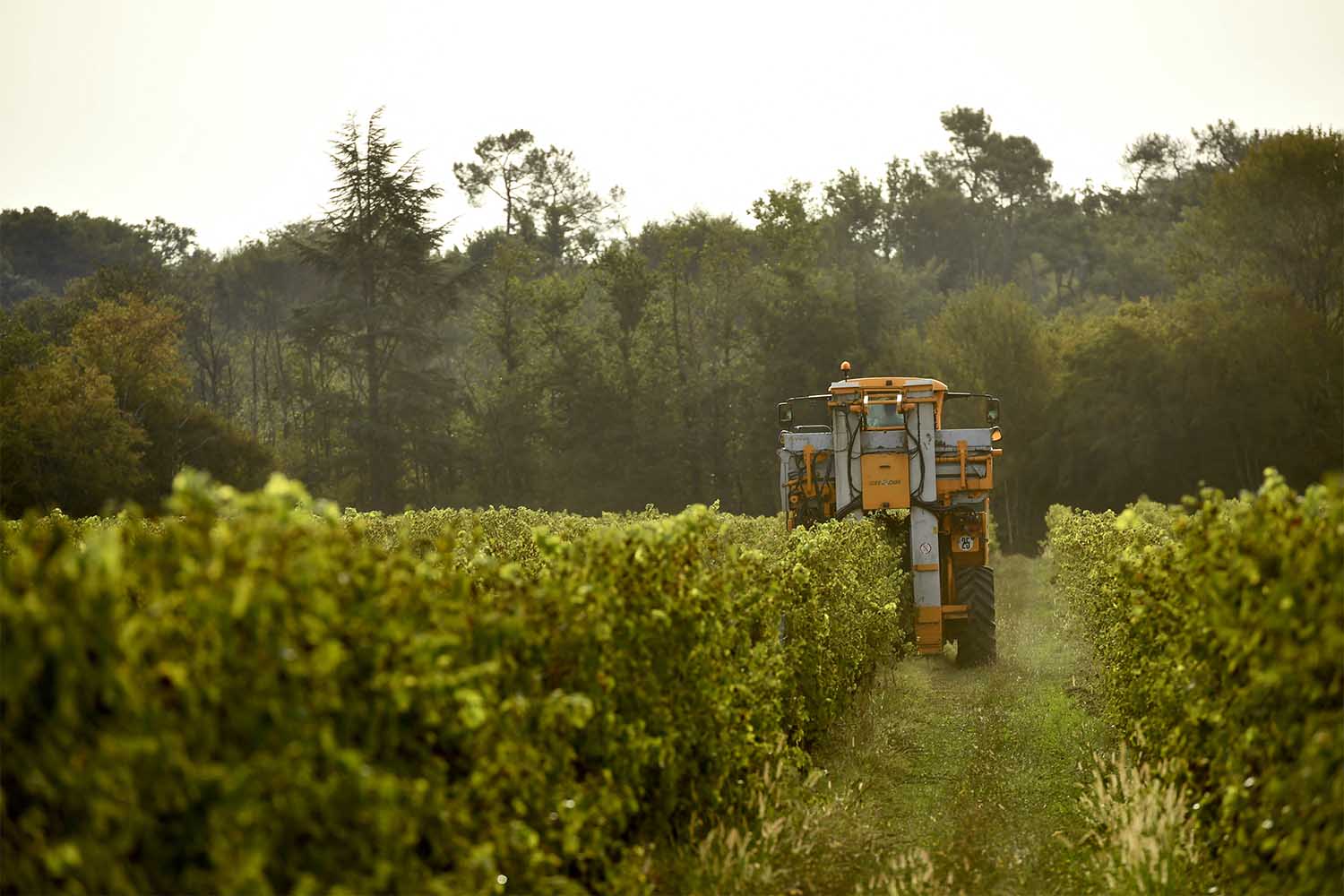
According to Will Taylor, sommelier at Compagnie NYC, delving into brandy may be as straightforward as tasting spirits made in your favorite wine regions. France, with its abundance of incredible wine, is an easy place to start, but don’t stop there. “While some of the finest brandies can be found in France, there are amazing examples all over the world,” Taylor says. “As sommeliers, it is our job to try new things, and if you want to select something truly unique, Equipo Navazos bottles incredible brandies from Jerez, Spain. They work with historic bodegas in the region and abroad to select and bottle singular sherries as well as sherry cask-aged brandy. They are truly marvelous discoveries with layers of flavor, and while off the beaten path, they will capture the imagination of any lover of a fine Cognac or Armagnac.”
According to Gould, everything starts at the beginning — and the base of any liquor should be the first thing to check off the list. “It is very important that, at the very least, they check the producer of the product,” he says. “Is it artisanally made? Is it free from colorings and additives? As terroir plays a large factor, there can be a fairly wide spectrum of possibilities and variations, which becomes an adventure in itself. The important point is that the journey has to start from an acceptable level of quality.”
Essentially, brandy comes in many varieties and flavors, and the only way to figure out which is your favorite is to try several of them, from all over the world, be it in a snifter or a cocktail.
Every Thursday, our resident experts see to it that you’re up to date on the latest from the world of drinks. Trend reports, bottle reviews, cocktail recipes and more. Sign up for THE SPILL now.
